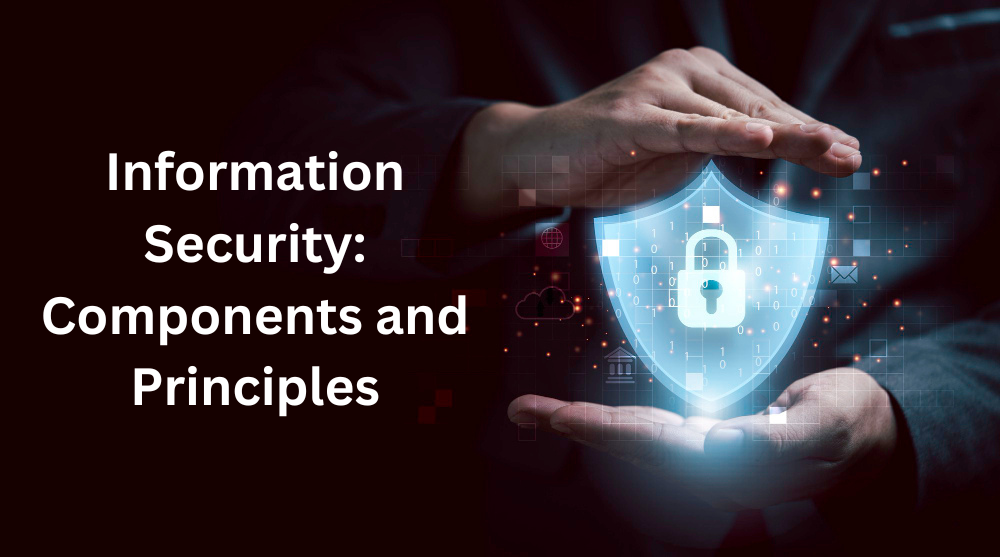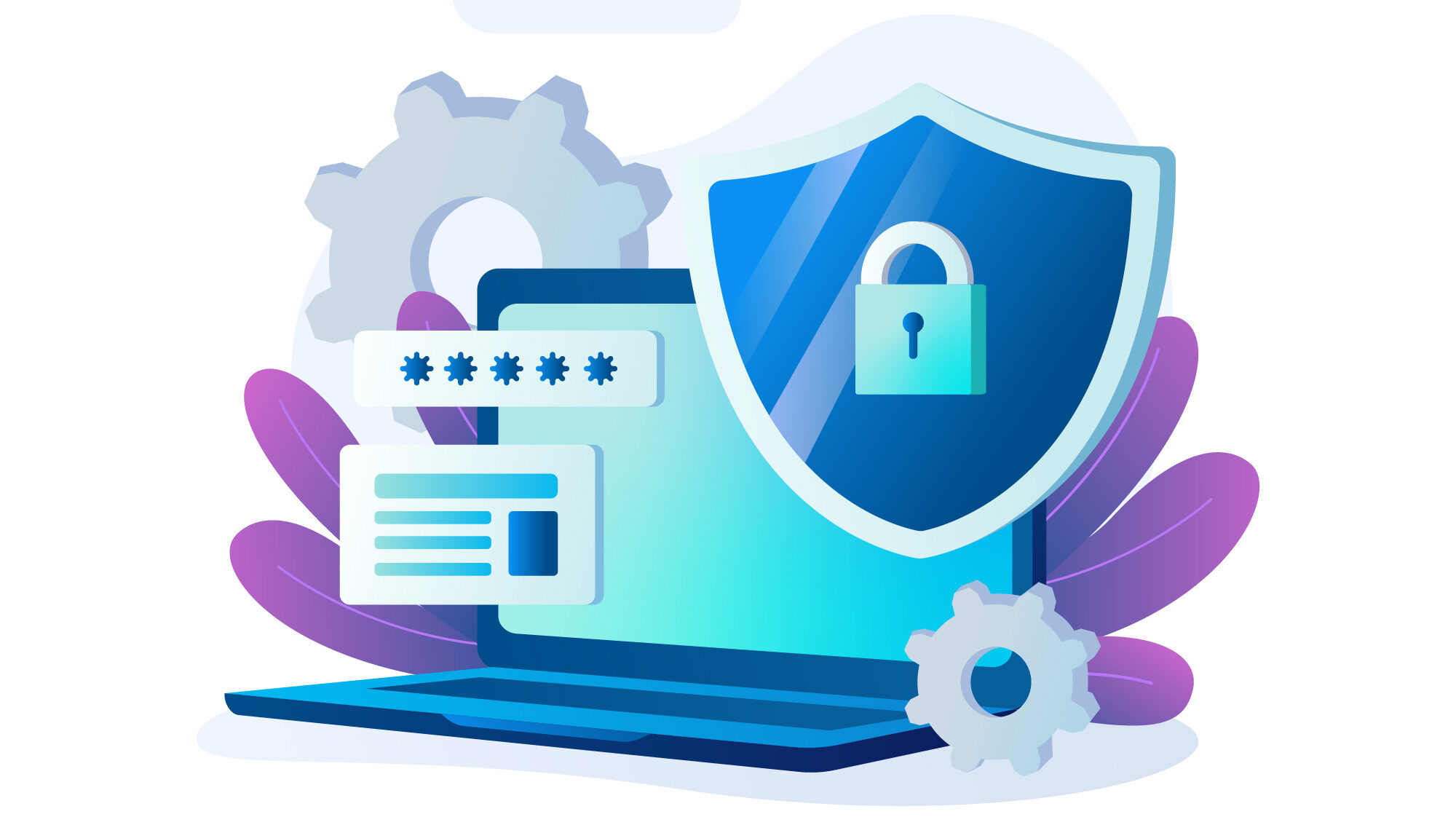Information Security: Components and Principles
Protecting sensitive data and systems has become an urgent priority in today’s digitally interconnected world. With its diverse components and guiding principles, information security is the forefront defense against the increasing wave of cyber threats and vulnerabilities. It encompasses a comprehensive framework meticulously designed to safeguard, identify, and address risks that could jeopardize the confidentiality, integrity, and accessibility of valuable information assets.
Information Security is not only about implementing solid technological solutions. It also involves harmonizing organizational policies, human practices, and strategic methodologies. This field includes various elements, from advanced encryption algorithms and firewalls to promoting a security-conscious culture among individuals who engage in digital ecosystems. Managed IT Services experts help improve your business’s information security.
This article will explore what information security means, its components, and its principles.
What Does Information Security Mean?
Information security refers to the practice of protecting information from unauthorized access, use, disclosure, modification, disruption, or destruction. It involves implementing various measures to ensure that information is confidential, accurate, and available when needed. Only authorized individuals must access personal data while maintaining its accuracy and integrity.
Availability ensures that information is accessible when needed. Information security encompasses a range of practices and technologies, including encryption, firewalls, access controls, and employee training. Organizations can safeguard their valuable data and protect against threats and breaches by implementing effective information security measures.
4 Components Of Information Security
Access Control
Access control is a critical component of information security. It involves implementing measures to ensure that only authorized individuals have access to sensitive information and resources. This can include physical controls, such as locks and keycards, and logical controls, such as passwords and encryption.
Access control helps to prevent unauthorized access, data breaches, and other security incidents. It also allows organizations to track and monitor who has accessed specific information or resources, which can be crucial for compliance. Implementing robust access control measures is essential for protecting sensitive data and maintaining information systems’ confidentiality, integrity, and availability.
Data Encryption
Data encryption is a vital aspect of information security. It includes transforming data into a format that can only be interpreted or decrypted using a decryption key. By encrypting confidential information, organizations can safeguard it against unauthorized access and ensure its confidentiality.
Encryption algorithms are designed to be complex and challenging to crack, providing additional security for data at rest or in transit. Strong encryption measures are essential for safeguarding valuable data and preventing potential breaches or unauthorized disclosures. Organizations should carefully consider their encryption needs and select appropriate encryption methods to ensure the integrity and security of their data.
Intrusion Detection and Prevention Systems (IDPS)
Intrusion detection and prevention systems (IDPS) are crucial elements of information security. These systems monitor and analyze the network traffic for any signs of unauthorized access or malicious activity. They can identify and notify administrators of threats like intrusion attempts, malware infections, and unusual behavior patterns.
IDPS can also take proactive measures to prevent these threats from compromising the network by blocking suspicious traffic or implementing other security measures. By deploying an effective IDPS, organizations can enhance their security posture and protect their valuable data and assets from cyberattacks.
Security Awareness Training
Security awareness training plays a vital role in ensuring information security. It involves educating and training employees on best practices for protecting sensitive information and preventing security breaches. This training typically covers password hygiene, phishing awareness, data encryption, and reporting suspicious activities.
By providing employees with the knowledge and skills to identify and respond to potential security threats, organizations can mitigate the risk of cyber-attacks and ensure the confidentiality, integrity, and availability of their data. Regular security awareness training sessions help reinforce these principles and update employees with the latest security threats and countermeasures.
4 Principles Of Information Security
Continuous Improvement
Continuous improvement is a fundamental principle of information security. It involves regularly reviewing and updating security measures to address new threats and vulnerabilities. By constantly assessing and enhancing security practices, organizations can better protect their sensitive information from unauthorized access, data breaches, and other potential risks.
This process includes conducting regular risk assessments, implementing appropriate controls, monitoring for potential security incidents, and promptly responding to any identified weaknesses or breaches. Continuous improvement ensures that information security remains a priority and evolves alongside the ever-changing landscape of technology and cybersecurity threats.
Confidentiality
Information security is based on confidentiality, crucial for safeguarding sensitive data from unauthorized access, use, or disclosure. It protects sensitive or classified information from unauthorized access, disclosure, or use. Maintaining confidentiality is crucial to protect the privacy and integrity of data, as well as to comply with legal and regulatory requirements.
Organizations implement various measures to ensure confidentiality, such as encryption, access controls, and secure storage systems. By safeguarding confidential information, organizations can maintain trust with their stakeholders and mitigate the potential risks associated with data breaches or unauthorized disclosures.
Integrity and Availability
Integrity and availability are two fundamental principles of information security. Integrity refers to the accuracy, consistency, and reliability of data and information. This principle ensures that data is not altered or modified in an unauthorized manner, preventing the risk of tampering or unauthorized access.
On the other hand, availability ensures that authorized users have timely and uninterrupted access to data and information when needed. This principle focuses on minimizing downtime and disruptions, ensuring that critical systems and resources are always accessible to those who need them.
Risk Management
Risk management is a critical component of information security. It involves identifying, assessing, and prioritizing potential risks to an organization’s information assets and implementing measures to mitigate or minimize them. Risk management aims to ensure information confidentiality, integrity, and availability by identifying vulnerabilities and implementing controls to prevent or reduce the likelihood of threats exploiting those vulnerabilities.
This includes conducting risk assessments, developing risk mitigation strategies, and regularly monitoring and reviewing the effectiveness of implemented controls. Organizations can proactively protect their sensitive information by managing risks from unauthorized access, disclosure, alteration, or destruction.
Conclusion
Information security is a multi-faceted framework comprising various components guided by fundamental principles for safeguarding sensitive data and systems. Through integrating technological tools, robust policies, vigilant monitoring, and a culture of awareness, organizations can fortify their defenses against evolving threats in the digital landscape. The interconnected nature of these components, combined with adherence to principles like confidentiality, integrity, availability, and more, forms the backbone of a resilient information security posture. As the technology landscape advances, maintaining a proactive stance, continuous adaptation, and a commitment to staying abreast of emerging risks remain pivotal to ensuring a secure and trustworthy environment for data systems.


















